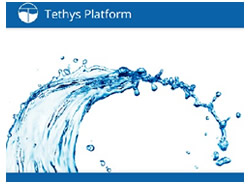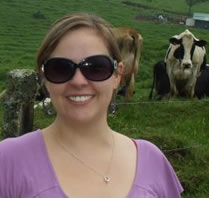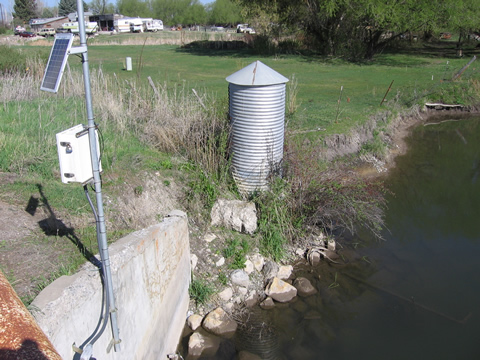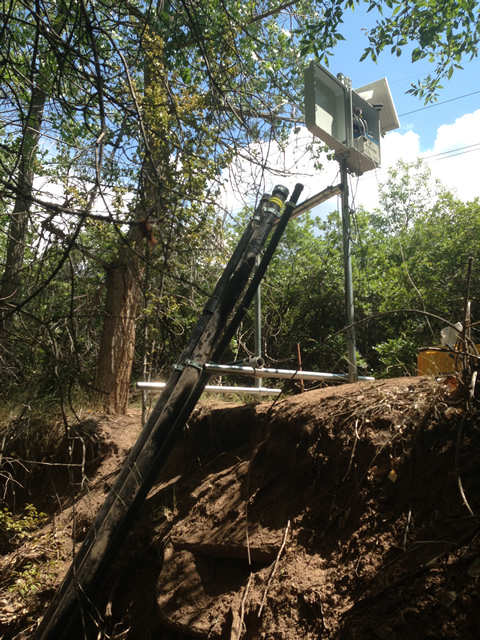News and Highlights
This is a list of past iUTAH EPSCoR news from 2012 to 2018.
February 9, 2015
CI-WATER Product Release: Tethys platform now available for use

CI-WATER is pleased to announce the achievement of a major project milestone with the public release of the Tethys Platform for water resources web application development. Designed to make it easier for developers to turn models and data into interactive apps, Tethys is a flexible, accessible solution that eases the learning curve needed to create the tools water resource analysts need.
Tethys has already been used by CI-WATER modelers to create the Parleys Creek Management Tool described in the CI-WATER newsfeed article “Project Update: Collaboration leads to integrated water management tools” (Sept. 27, 2014). Soon, CI-WATER researchers at the University of Wyoming will be collaborating with Brigham Young University’s Tethys development group to visualize their output data sets.
Lead developer Nathan Swain says, “That will present a fun challenge because they have really huge data sets.”
Even more exciting, the platform is receiving attention from the broader water science community. Nathan’s group is currently preparing for National Flood Interoperability Experiment (NFIE) at which numerous graduate students in hydroinformatics will gather for what Nathan calls “kind of a hack-a-thon.”
“The goal of our participation in NFIE is to promote Tethys as a tool for other participants and apply it to a relevant, real-world problem,” Nathan says.
To access Tethys, visit http://tethys.ci-water.org/. Note that users can subscribe to receive email updates.
This material is based upon work supported by the National Science Foundation under Grant No. 1135482.
Read More...
February 9, 2015
Graduate Student Spotlight: Taya Carothers, USU

Taya grew up in Indiana and received her Bachelor’s degree, from the University of Southern Indiana in International Studies, and Spanish. While pursuing a dual-Master’s degree in Natural Resources and Sustainable Development from American University and the U.N. University of Peace,Taya became interested and involved in water issues at the global level. This experience drew Taya to the Sociology program at Utah State University and specifically the iUtah project.
She is pursuing her PhD in sociology under the guidance of Dr. Courtney Flint. Currently, Taya is excited to explore more about water governance in the U.S. and human dimensions of water in Utah. This includes looking at people’s perceptions of their vulnerabilities related to water resources as well as discovering how Utahans value water. Taya is currently using results from the iUTAH household water survey to discover respondent characteristics that can be used as indicators for specific water questions. This will help guide her next project that looks to pursue better ways to incorporate all of Utah’s voices related to water. Beyond research, Taya is enjoying getting to know this part of the Western U.S.
February 2, 2015
The Untapped Potential of Water Conservation
Check out iUTAH researcher Dr. Joanna Endter-Wada's article "The Untapped Potential of Water Conservation" in the latest edition of Utah Science. Feel free to look through the rest of this issue of Utah Science for other great water-related features!
Read More...
February 1, 2015
Where is the Nitrogen in Utah's Streams Coming From?
Air pollution that is in rain, snow, and dry particles can affect the biology and quality of stream ecosystems. iUTAH Postdoctoral researcher, Dr. Steven Hall’s work confirms that both urban and mountain snow in Northern Utah contains the same components that are in PM2.5, the fine particulate matter that is of the greatest health concern about air pollution. This demonstrates that local air pollution has a widespread environmental impact. Despite differences in air pollution in the Salt Lake, Cache, and Heber valleys, similar amounts of nitrogen were deposited in those areas during the winter of 2013-14.
Dr. Hall has found there is ample nitrogen in Utah’s urban streams, but air pollution isn’t the main culprit. Hall’s data shows that only a small amount of the nitrogen in precipitation actually ends up in streams. Most of the nitrogen is taken up or removed by plants and microorganisms. Rather, other urban sources appear to be the dominant contributors of nitrogen in streams. In Salt Lake City's Red Butte Creek, stream nitrogen peaked following inputs of urban groundwater. Measurements of nitrogen isotopes in streamside plants showed differences in nitrogen composition between plants in the mountains and those in urban areas. This suggests a shift in nitrogen sources and cycling as streams enter urban areas. The amount of nitrogen being measured is not directly hazardous, but can contribute to numerous changes in our aquatic ecosystems. These include shifts in biological communities (the identity and abundance of species) and the increased growth of algae.
What does this mean for those living in these urban areas? To decrease the nitrogen in our streams, use less fertilizer on your lawn or convert your yard to drought-tolerant vegetation. In many cases fertilizer is over-applied, and frequent applications are unnecessary given high background nitrogen inputs from atmospheric deposition, especially if clippings are retained on the lawn.

SITE3-GAMUT site at Mendon Road, Mendon UT

SITE5-GAMUT site at Foothill Drive, Salt Lake City UT
January 29, 2015
Highlights from NSF-EPSCo's Winter Meeting
Participants from the 28 EPSCoR (Established Program to Stimulate Competitive Research) jurisdictions heard from National Science Foundation staff and shared their successes and concerns at the winter PD/PA/EOD meeting held Jan. 22-23.
Four iUTAH team leaders – Project Director Michelle Baker, Project Administrator Andy Leidolf, EOD Director Mark Brunson and EOD Coordinator Ellen Burns – attended the meeting held in Honolulu. Ellen spoke about iUTAH’s connections with the Society for Advancement of Chicanos and Native Americans in Science (SACNAS) and the American Indian Science and Engineering Society (AISES) during discussions about diversity enhancement. Mark described results of our EOD Catalyst Grant and Research Catalyst Grant programs as part of a session on EOD highlights.
The meeting featured four sessions: one from EPSCoR’s leadership in Washington, DC, on the latest policy adjustments to the program; one focusing on project administration; one focused on EOD activities; and one on program evaluation. The latter three were organized by staff from different state jurisdictions and were designed to share positive experiences, ongoing concerns, and best practice in EPSCoR management.
iUTAH is scheduled to make a “reverse site visit” (RSV) to NSF headquarters in September as part of our program’s ongoing evaluation, and we were pleased to learn about changes in the RSV process that will afford us more time to describe our program. We also heard about adjustments to NSF’s program administration arising from a federal effort to make granting processes more consistent across agencies. iUTAH participants can expect to hear more about these developments over the next few months.
January 23, 2015
iUTAH will be featured nationally on SciTech Now

The SciTech Now series being broadcast on UEN-TV, captures the latest breakthroughs in science, technology and innovation. This Monday, January 26th at 8:30pm, SciTech Now’s will feature “iUTAH: Science for Utah’s Water Future” the statewide EPSCoR project to study water use throughout the state. Visit the UEN-TV web site to find your translator station. If you’re unable to watch Monday evening, you can view past episodes on uen.org/scitechnow after the program has aired. These programs are also broken down into segments for educational use. The iUTAH video was also selected to air nationally with other public UEN TV partners.


